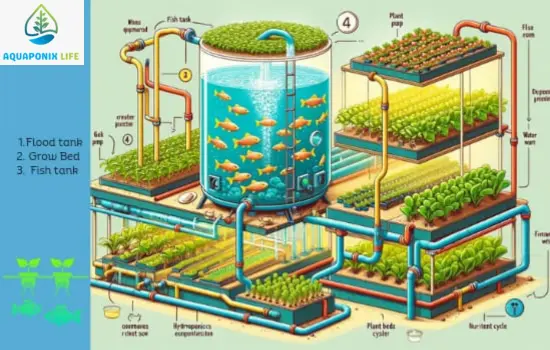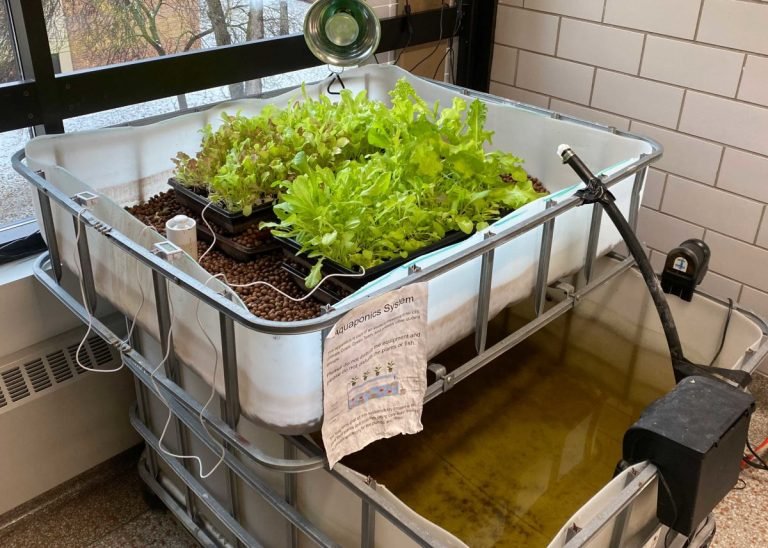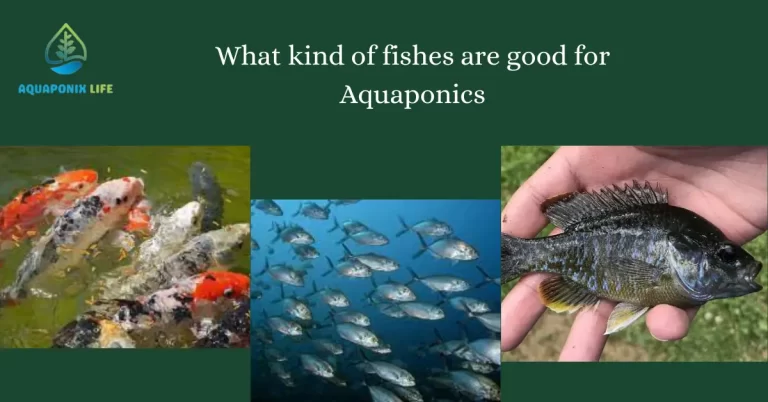How Does Aquaponics Work: A Magic Behind Fascinating Symbiotic System
Welcome to the world of Aquaponics! The fascinating way where nature and technology meet together and create an innovative method of raising fish and growing plants. If you ever wondered how Aquaponics works, you are in for an interesting and exciting journey. This informative blog will explore the fascinating relationship between fish farming and soil-less plant cultivation. That process is the backbone of this unique system. Get ready to dive into the world where fish waste becomes the plant’s food, and in return, plants make the water clean and pure for fish. Let’s uncover How aquaponics work.
What is an Aquaponic System?
The Aquaponics system is a groundbreaking farming technique that combines aquaculture and hydroponics in a symbiotic relationship. In this ideal and harmonious system, fish and plants coexist with each other with mutual benefits. Fish waste is converted into essential nutrients by beneficial bacteria, providing nutrients to plants. In return, plants absorb these nutrients, purify the water, and create a clean environment for the fish. Aquaponics is the shining example of how nature collaborates with technology and paves the way for a greener and more sustainable future.

Related Blog: What is Aquaponics?
How Does Aquaponics Work? Step-By-Step
So, here is a step-by-step breakdown of the inner workings of Aquaponics.
The Symbiotic Relationship Of Plants And Fish:
The water enriched with fish waste flows through the grow beds, and the plants in these grow beds absorb the nutrients that they need for growth. By this process, plants remove harmful substances from the water and act as natural filters. The clean and purified water is then returned to the fish tank, creating a sustainable cycle.

Step-1 Aquaculture: Fish Raising
- Fish, such as tilapia or trout, are raised in the pound or aquaponics system.
- The fish produce waste that contains ammonia through excretion. The waste accumulates in the water.
Step-2 Filtration And Nitrification
- The second step is filtration and nitrification. In this step, water is pumped into the filtration system. Here, solid waste is removed.
- The Nitrifying bacteria convert the ammonia in the water into nitrites and then into nitrates that are less harmful to the fish. In this conversion, the nitrogen cycle is a fundamental process.
Step-3 Absorption of Nutrients By Plants
- The Nutrient-rich water is then circulated to the plants’ beds or grow trays, where plants are cultivated without soil.
- The plants directly absorb the nutrients from the water and remove the pollutants and nitrates effectively.
- The plants act as natural filters and water purifiers of water for fish.
Step-4 Purified Water Return To Fish Tank
- The pure and clean water is then returned to the fish tank and completed the closed loop system.
- Due to the recirculation process of water, there is a continuous supply of water and nutrients for fish and plants.
Step-5 Harvesting Of Mature Crops
- With time, plants grow, and when they mature, they are ready for harvest.
- After harvesting the crops, the space is free for new plants. This maintains a continuous cycle of production.
Step-6 Monitoring And Maintenance
- For a balanced Aquaponic system, the continuous monitoring of water quality .pH level and temperature of water is necessary.
- Fish feeding and plant care are also necessary factors. Moreover, the occasional maintenance tasks, such as filter cleaning and checking the plumbing, are vital for the system’s smooth operation.
The Fundamental Process In Aquaponic System: Nitrogen Cycle
The nitrogen cycle is the fundamental process in an aquaponic system. The process transforms the ammonia from the fish waste into less harmful components, nitrates. The beneficial bacteria play an important role in the nitrogen cycle.
- Nitrosomonas
- Nitrobacter
Nitrosomonas convert ammonia from the waste of fish to nitrites, and the Nitrobacter converts nitrites into nitrates. These are the rich source of nutrients for plants.
The Role Of Bacteria In Aquaponics:
The Beneficial bacteria play an important role in the functioning of the nitrogen cycle. These bacteria colonize the surface of the grow media and provide a substrate for their growth. Without these bacteria, the nitrogen cycle cannot start, and ammonia accumulates in the water and harms the fish. These bacteria maintain the water quality and provide essential nutrients for the plant’s growth. So, converting nitrites to nitrate is crucial for aquaponic systems.
Note: Maintaining the beneficial bacteria population and monitoring the water parameters are essential for efficient working and long-term success of the aquaponic system.
FAQS:
What is the Ideal Amount of Nitrates in the Aquaponic system?
An aquaponic system’s ideal level and amount of nitrate is 3-150 mg per liter. It also depends on fish species because some fish can tolerate higher levels of nitrates. But try to follow the ideal level of nitrates.
What is the crucial part of an aquaponic system?
The crucial part of the aquaponic system is water. It is the backbone of this system because it provides media for fish and is also necessary for plant growth.
Do Fish Reproduce in Aquaponics?
Yes, fish can reproduce in Aquaponics. The fish reed and lay eggs in water. The balanced ecosystem and nutrient-rich water in the aquaponic system provide an ideal environment for fish reproduction.
What is the fastest-growing fish in Aquaponics?
Tilapia is considered one of the fastest-growing fish in Aquaponics. In optimal conditions and proper care, tilapia can grow rapidly. It can adapt easily to different environmental conditions, making it more suitable for aquaponic systems.
What is the primary role of plants in the aquaponic system?
Plants act as natural filters in aquaponic systems. They maintain water quality by absorbing nutrients and removing harmful substances like ammonia, nitrates, and pollutants.
Conclusion:
Aquaponics system provide an exciting and sustainable approach to aquaculture and hydroponics in closed loop ecosystem. plants act as natural filters and purify the water for fish and fish waste provide nutrients for plants. This symbiotic system not only provide sustainable production of fish and plants but also conserves the water and reduce the need of chemical fertilizers. With the proper use of these resources and its ability to implement on various scales and environment aquaponics holds excellent potential for making more sustainable future in the field of food production.








I’ve been surfing online more than three hours today, yet I never found any interesting article like
yours. It’s pretty worth enough for me. In my opinion, if all
website owners and bloggers made good content as you did, the internet will
be much more useful than ever before.
Thanks Richard Lydon.